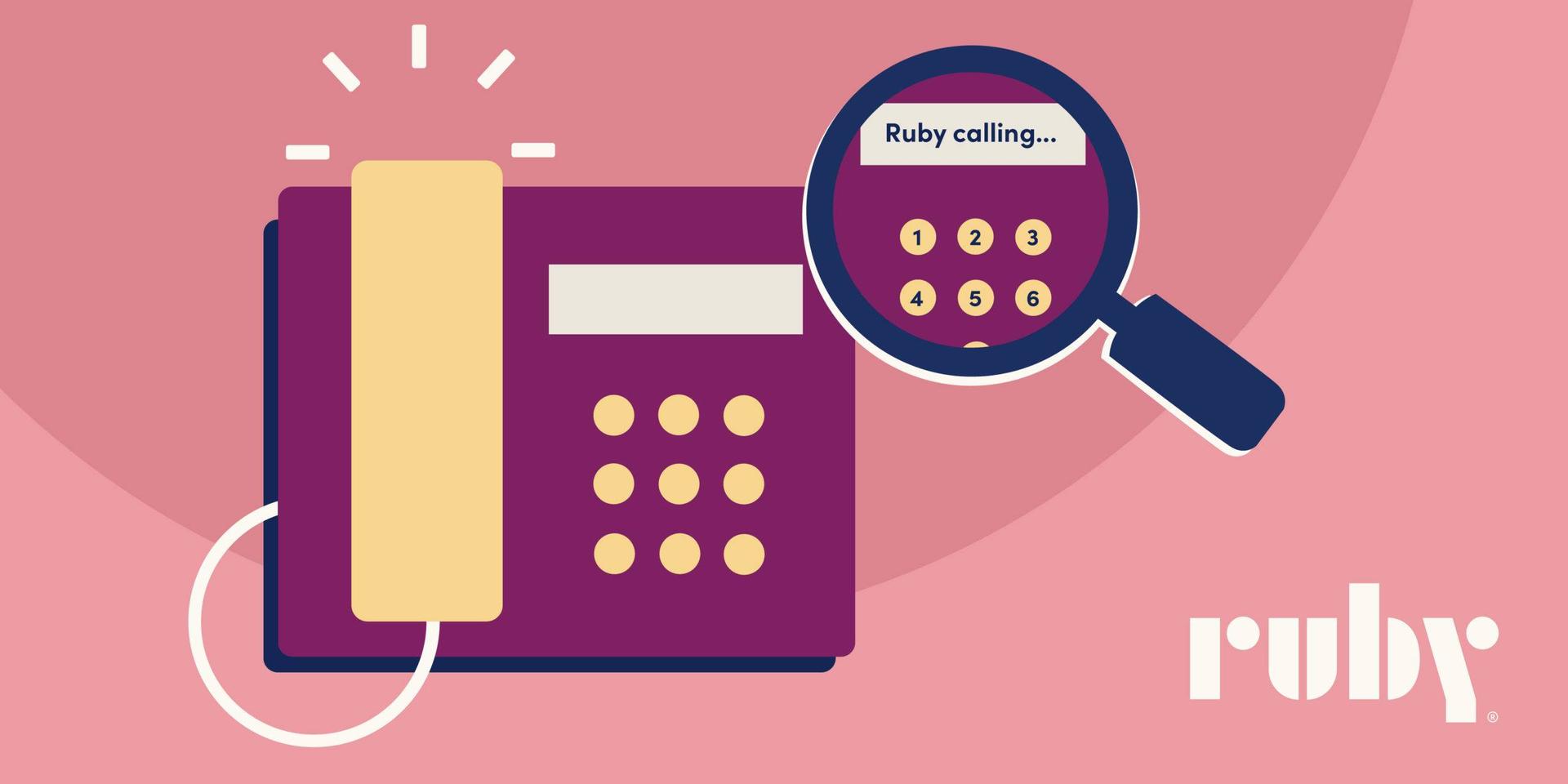
Price, shmice. Brand, shmand.
These days, the number one differentiator is customer experience.
If you can make the people you serve feel happy, cared for, and enthusiastic about working with your business, you’ll outperform the competition every time. There’s a reason—or more precisely, a hundred little reasons—most people will pay more for a better customer experience.
So how you make it happen? How can you center the people you serve in everything you do?
It starts with a friendly hello. From there, the job is to listen intently to the other person and do everything possible to give them what they want.
Simple enough, right? In practice, however, things can get rather… complicated. Every conversation is a new adventure, and wowing each customer demands a different combination of ingenuity, finesse, and nerve. Take it from Ruby’s connection-making, gift-giving, personalized-tour-hosting team.
We have no shortage of tips and tricks for delivering extraordinary customer experiences. Here are a few of our favorite stories about how our virtual receptionists and Customer Happiness team members have boosted business by going above and beyond.
Table of contents
Reaching out when customers are in need—before they ask for it
Good customer service is proactive customer service. That means reaching out to help people before they ask for help—even when it means helping them pay less for your services, product, or solution.
At Ruby, we’re not fans of charging our customers for more than what they actually need, as Carly Stringer of Stringer Law found out:
It might feel like a loss of revenue, but this approach pays dividends over time, as a customer or client is more likely to stick with you and recommend you to others. With that mindset, it’s relatively easy to guide someone toward the most affordable option—just tell them how to pay less. Other forms of proactive customer service are equally powerful, but entail more steps and require other skill sets.
For example, one of our virtual receptionists, Noah, recently noticed that a customer was manually flagging robocall after robocall on the Ruby app. The customer hadn’t realized that flagging doesn’t automatically block the numbers, so Noah reached out and offered to help. He not only took on blocking the calls in Ruby’s proprietary software, but created a quick script that automated the process, blocking nearly 300 numbers at once! The business owner was able to get back to work quickly and rest easy knowing that fewer unwanted calls would go through.
Using real customer communication to create better FAQs
Frequently asked questions (FAQs) on your website empower your customers or clients to help themselves, saving them—and your business—precious time. Not every company shows visitors the most relevant FAQs, however, and many websites lack them altogether.
That’s because some businesses feel they lack the capacity to create FAQs for everyone they serve, while other businesses may not have the perspective to understand what a prospect would want to know. Either challenge can be solved with an attitude shift. Rather than thinking of a conversation as a one-off problem to solve or an interaction to get through, see it as a learning and data collection opportunity.
Consider changing your definition of “frequency” as well. Remember that for every person who raises an issue, there are approximately nine more silently dealing with the same concern. Your customers or clients are always telling you how you can better serve them, if you’re able to listen to them.
Of course, engaging in customer communication does take time, which is why we’re here to help. A virtual receptionist provider like Ruby can help you create, modify, and enhance your FAQs.
Trust us—answering frequently asked questions is what we do for a living. A typical Ruby receptionist takes hundreds of calls per day, and each of our chat specialists handles a comparable number of online conversations. We can tell you what information your customers or clients are looking for, so you can make that information more readily accessible to website visitors. Many of our customers have used Ruby to do exactly that, improving their bottom lines as a result. They not only save time, but help clients and customers set the right expectations up front.
One customer told us that adding FAQs based on real conversations has significantly reduced the number of irrelevant calls her business receives, so she can make the most of Ruby and focus more energy on connecting with actual leads. And she’s not alone—our most commonly-added FAQ addresses what services a business does and doesn’t provide, weeding out real prospects from poor fits.
Aligning your schedule with customers’ schedules
More actionable FAQs are just the tip of the customer-centricity iceberg (try saying that five times fast). Listen closely to clients or customers, and you’ll uncover ways you can tweak your business to better serve their needs.
Say you’re a family law attorney, and many of your clients and prospects reach out in the evenings after putting their kids to bed.
Or you’re an HVAC professional who receives tons of calls on weekends in the summer.
Or you run a different business entirely, and for whatever reason, Tuesdays have become your new Mondays—communication spikes in the middle of the week.
Rather than sending people to voicemail or waiting until the next available business day to follow up, you can shift your hours to correspond better to your customers’ or clients’ schedules.
Better yet—if you don’t want to work early mornings, evenings, and weekends—use a solution like Ruby to handle those conversations for you.
We act as a seamless extension of your business, indistinguishable from an in-house receptionist. That makes it easy for you to remain 9–5 (or hey, what about 10–3, or whenever-you-want to whenever-you-please?) and nonetheless provide customers or clients with 24/7, personalized service.
Making it (super) personal
Speaking of personalized service, the best virtual receptionists are experts at making every person they’re talking to feel like the most important person in the world.
A little while back, for instance, we heard from a customer who was concerned our chat solution wasn’t working as desired. When Lin, one of our Customer Success Specialists, received this information, she flew into action. She connected with the business to find out what was going wrong and learned they were unhappy about the amount of time it took them to receive information about their website chats. They expected Ruby to connect every new lead to their office within a minute or two of the chat window closing.
This sparked a conversation about what we could do to better serve the customer. Together, they discovered we could bypass a few steps and give the customer the results they wanted. It paid off. A few months later, the customer informed us that Ruby had generated $100,000 in revenue for them in a single month, thanks to Lin’s efforts and changes.
Lin’s outreach to the customer required time and effort—and so did changing their account processes—but she was happy to do it because it made the customer’s life easier. Moreover, as the results bore out, those efforts delivered serious return on investment for everyone involved.
By listening to every person you serve and focusing on how you can better help them, you’ll bring your business to new heights. An individualized approach ensures every customer or client gets the maximum value out of your offerings. And when a seemingly minor change can translate to a six-figure benefit, as it did in this case, it’s a no-brainer.
Taking time to truly listen—as much time as the customer needs
I could write at length about other tricks of the receptionist trade (such as sending thoughtful follow-ups and gifts), but you know what’s really powerful—and takes no money or special training to do?
Seriously. In nine interactions out of ten, what a customer, client, or prospect wants is for someone to listen to them. I’m referring to real listening—active, supportive, empathetic, judgment-free listening—and letting the talker talk for as long as they need to.

This one’s not too difficult to practice at your business. Show up with an open ear, mind, and heart for someone who contacts you and you’ll be surprised at what you hear. People will tell you things that alter your perception of your business and your purpose.
We’ve experienced the power of listening time and time again at Ruby.
- There was the time Tiffany W. listened to a caller talk about her wrongful termination claim. Although our customer couldn’t take the caller’s case, Tiffany took the initiative to ask for another resource and was able to connect the caller to the National Employment Lawyers Association.
- Another time, Jasmine T. had a much longer conversation than usual with a caller she realized needed an empathetic ear—it seemed he had primarily called just to talk to someone. Nevertheless, she took detailed notes from the conversation and passed them on to our customer. Days later, the customer informed us that the caller had converted into a client thanks in large part to the helpful person he talked to on the phone.
- And then there was the time Maddie T. spoke to a frustrated-seeming caller who told her, “We’re on a time limit here.” Instead of getting defensive, Maddie took a deep breath and reminded herself to be gentle and supportive. She listened to the caller, took notes, and read them back. As it turned out, the caller was terminally ill. They were given a few months to live and were calling an attorney to finalize their end-of-life plans. By the time the conversation was over, the caller was laughing and telling Maddie how now the only thing they had left to do was to buy passes and go to Disneyland every day until the end.

Ultimately, these kinds of stories are what great customer experience is all about: people receiving the service, compassion, and kindness they deserve. And our “secrets” aren’t so secret—they all tie back to customer experience fundamentals: showing up, listening, and making a sincere effort to help.
Most businesses already know these secrets. And countless business owners would love to implement them at every opportunity. They would love to go above and beyond to serve customers and clients… but it doesn’t always seem possible or cost-effective.
Ruby makes it possible. And with our proven ROI with growing businesses, you can trust Ruby to make connections that translate directly into revenue.
See how it works. Book a free consultation with us.



